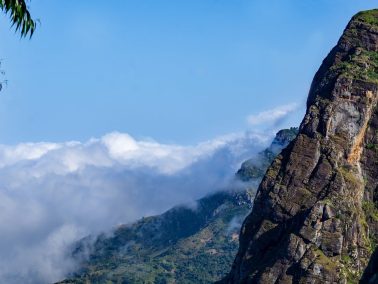Welcome to Tanzania, where the vast African savannah and the thrilling action of the wild intertwine to showcase nature's greatest majesty. In this extraordinary land, you'll find some of the most breathtaking destinations on Earth.
The Serengeti, with its endless plains and the legendary Great Migration, offers a unique opportunity to witness millions of animals in their natural habitat, making it a must-see for wildlife lovers.
The Ngorongoro Crater, often called the "Eighth Wonder of the World," is a self-contained ecosystem with a remarkable concentration of wildlife, from black rhinos to large lion prides.
Tarangire National Park, known for its towering baobab trees and large herds of elephants, provides a more intimate safari experience with its varied landscapes and diverse species.
Serengeti National Park
Home to one of the great wonders of the world: the annual majestic migration, the Serengeti hasthe highest concentration of wildlife in the world: more than 2 million wildebeest, half a millionThomson's gazelle, and a quarter of a million zebra. It takes six- eight hours to drive there.
Umbrella acacia trees abound contrasting with the twisted,damaged commiphora trees which shows that you are in elephant country, while buffalo, zebra,giraffe and gazelles proliferate as do the famous black-maned lions and Leopards of Seronera.
You will seeGrant's and Thomson's gazelles, as well as the occasional small groups of topi and kongoni.Ostriches and secretary birds strut the grass, while families of warthog, hyena and blue colobus monkeys roam
You may also see large herds of baboons.Near the Grumeti River, the land fades from endless vistas of savannah to swamp and riverine forestto woodland. It varies from open grass plains in the south, savannah with scattered acacia trees inthe centre, hilly, wooded grassland in the north, to extensive woodland and black clay plains to thewest. Small rivers, lakes and cactus-studded swamps are scattered throughout. In the lushswamps, there are crocodiles.
There are many swamp pools lined by ubiquitous palm trees withhuge fronds and upright candelabra trees. Out of the vast sea of grass also rise great graniteoutcrops, known as 'kopjes', which have their own range of vegetation and wildlife.All wrought by volcanic activity, wind, sun, bushfire and rain.All told, there are more than 30 species of large harbivores and nearly 500 species of birds.For a fulller bird list, please see here- Birdlife of the Serengeti. It is possible to fly to the Serengeti from Arusha. It's also possible to fly over the Serengeti by balloon. Please contact us for more details. One thing is certain- the Serengeti will touch your soul.
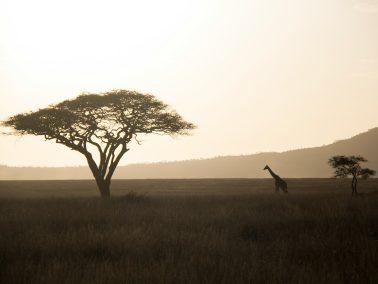
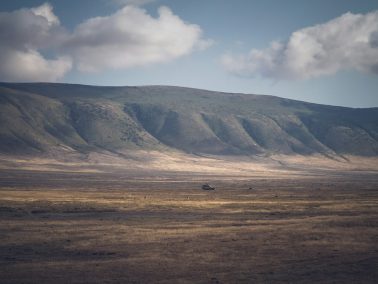
Ngorongoro Crater
Two or three million years ago, the crater formed when a large volcano around 4500- 6000 feet high exploded. Estimates of the original volcano's height range from fifteen to nineteen thousand feet (4500 to 5800 metres) high. In 1892, Dr. Oscar Baumann was one of a 200-member “Maasai Expedition”. He performed map-making duties, and was the first European to visit Lake Eyasi and Lake Manyara. During this trek, he came upon the largest caldera in the world. He officially became the first European to discover Ngorongoro Crater.
Before WW1, two German brothers farmed in the crater and later threw hunting parties for their friends. Now it is 2000 feet deep and its floor covers about 100 square miles. It hosts around 25,000 animals, most of which cannot escape due to the steep inclines- largely ungulates, along with reputedly the highest density of mammalian predators in Africa, living in the crater.
Large animals in the crater include the black rhinoceros and the hippopotamus; among them roam wildebeest, zebra, eland, and Grant's and Thompson's gazelles. The crater also has the densest known population of lions. On the crater rim are leopards, elephants, mountain reedbuck, and buffalo. No humans are permitted to stay in this mini Jurassic Park-like, natural animal enclosure. For birdwatchers, see the Ngorongoro birdlist.
Tarangire National Park
Tarangire National Park is the only source of water for wild animals during dry seasons. Famed for its huge number of elephants, baobab trees and tree climbing African pythons, it lies a little distance to the south east of Lake Manyara, 75 miles southwest of Arusha.
It covers an area of approximately 2,850 square kilometers. Studded with baobab trees, Tarangire National Park has some of the highest population density of elephants anywhere in Tanzania, See up to 300 elephants and wildebeest, zebra, buffalo, impala, gazelle, hartebeest and eland populate the lagoons.
Tarangire hosts the greatest concentration of wildlife outside the Serengeti. View up to 550 bird varieties, the most breeding species in one habitat anywhere in the world. Marvel at the Kori bustard, the heaviest flying bird; and the stocking-thighed ostrich, the world's largest bird. A classic dry-season destination, it is possible to go on walking safaris and night game drives also.
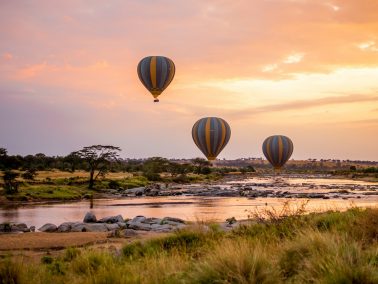

Lake Manyara
"The loveliest lake I have seen in Africa”- so wrote Ernest Hemingway. Lying beneath the western escarpment of the Rift Valley. Lake Manyara is a shallow freshwater lake in Tanzania covering nearly 89 square miles commanding stunning views of wild forest and grassy floodplains and even the blue volcanic peaks of the Maasai Steppes. The lake boasts a diverse set of landscapes and wildlife. including leopards, hippos, impalas, elephants, wildebeests, buffalo, warthogs, bushbuck, blue monkeys and giraffes.
Not to mention the famous but elusive tree-climbing lions peculiar to the Lake. Bear witness to the awesome giant fig, acacia and ancient mahogany trees flourishing in the groundwater forest. Observe over 300 migratory birds, including thousands of migrating pink flamingos, hornbills, long-crested eagle and grey-headed kingfisher. (It's entirely possible for onrnithologists to be able to observe 100 of these in one day.) Day and night game drives are possible and even canoeing when the water levels are high enough.
Lake Natron
Lake Natron is a salt lake located in northern Tanzania, close to the Kenyan border This soda lake has mineral-rich, hot springs and is below three meters (10 feet) deep. It varies in width which changes due to high levels of evaporation, leaving high levels of salt and other minerals. Water temperatures can reach 50 degrees Celsius (120 degrees Fahrenheit).
The alkali salt crust on the surface of the lake is also often colored red or pink. Natron is the only regular breeding area in East Africa for the 2.5 million endangered Lesser Flamingoes- three quarters of the world's Lesser Flamingo population. As salinity increases, so do the number of cyanobacteria, and the lake can support more nests. These flamingoes, the largest flock in East Africa, gather along saline lakes in the region, where they feed on Spirulina (a blue-green algae with red pigments). The lake provides a natural barrier against predators.
Greater Flamingo also breed on the mud flats. The lake seasonally plays host to a large number of birds. For a fuller list, please see here: List of birds at Lake Natron. An endemic species of fish, the alkaline tilapia (Oreochromis alcalicus), thrives in the waters at the edges of the hot spring inlets. Due to its unique biodiversity, Tanzania added Natron's Basin to the Ramsar List of Wetlands of International Importance on July 4, 2001. Dangers to the flamingoes lie in a planned soda ash exploitation in the Lake. For more details and how you can help, please see here: Think Pink: how you can help the flamingoes.
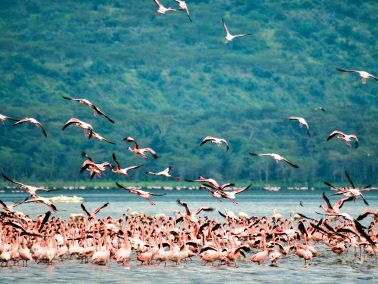
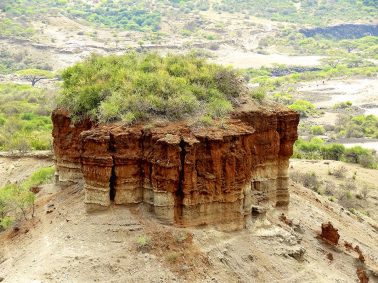
Olduvai Gorge
Following a butterfly in the lush wilds of Tanganyika some 50 years ago. German entomologist Wilhelm Kattwinkel slipped off a rocky ledge and almost killed himself. When he managed to recover himself, he found himself in an anthropologist's dream world: an erosion-created rift with layer after layer of fossils, bones and ancient artifacts.
The find was named Olduvai Gorge,and archaeologists ever since have been scrambling up and down its sun-baked sides insearch of clues to man's earliest awakening. Olduvai Gorge is commonly referred to as the cradle of mankind and provides a remarkable document of ancient life. Olduvai is a steep-sided ravine approximately 30 miles long. Its most famous fossil is the 1.8 million year old, ape-like skull- Australopithecus boisei- or "nutcracker man" due to its large molars, discovered in 1959 by Mary Leakey.This is also where certain kinds of tools- Oldowan- were first discovered. It is now thought that the Oldowan toolmaking tradition started about 2.6 million years ago.
Bones from this layer are not of modern humans but primitive hominid forms of Paranthropus boisei and the first discovered specimens of Homo habilis. In 1972, humanlike footprints appeared estimated to be 3.7 million years old at Laetoli, 45 km south of Olduvai, were discovered.Lying 5km off the road to the Serengeti, and founded by Mary Leakey, Olduvai Gorge Museum is dedicated to the appreciation and understanding of the Olduvai Gorge and Laetoli fossilsites. Some of the staff members have been there since the museum opened.There is a saying: "Life began in Africa." Visit the museum to see why.
Usambara Mountains
Offering panoramic vistas, cool climate and pretty villages, the Usambara mountains are known as one of Tanzania's northeastern highlights. Its mountains are divided into two ranges by a 4 km-wide valley. The western Usambaras are the most accessible though paths can become muddy during the rains.
Amani Nature Reserve
Amani is a lush and peaceful spread of montane forest alive with the sound of birds, waterfalls and chirping crickets. There is a labrynth of 1- 2 hour walks along beautiful paths.
Lushoto
A leafy highland town (1200 m) wreathed in a lush, fertile valley wrapped in pine, eucalyptus and banana trees. This is the centre of the Usambaras and is the perfect base for hiking trips. A former German colonial vacation destination.
Hiking & Walking
Lushoto's hills offer many walks past picturesque villages, cornfields and banana plantations. These range from a few hours to several days' duration.. From the fabulous, shorter walk to Irente viewpoint (you can purchase cheese, yoghurt and bread at Irente Farm) looking down to vast plains below- to three and four day hikes from Lushoto to Mtae, or a five day walk to Amani Nature Reserve, we can tailor trips to your specifications or arrange them for you if you like. We offer short one day walks to multiple days' walks.
